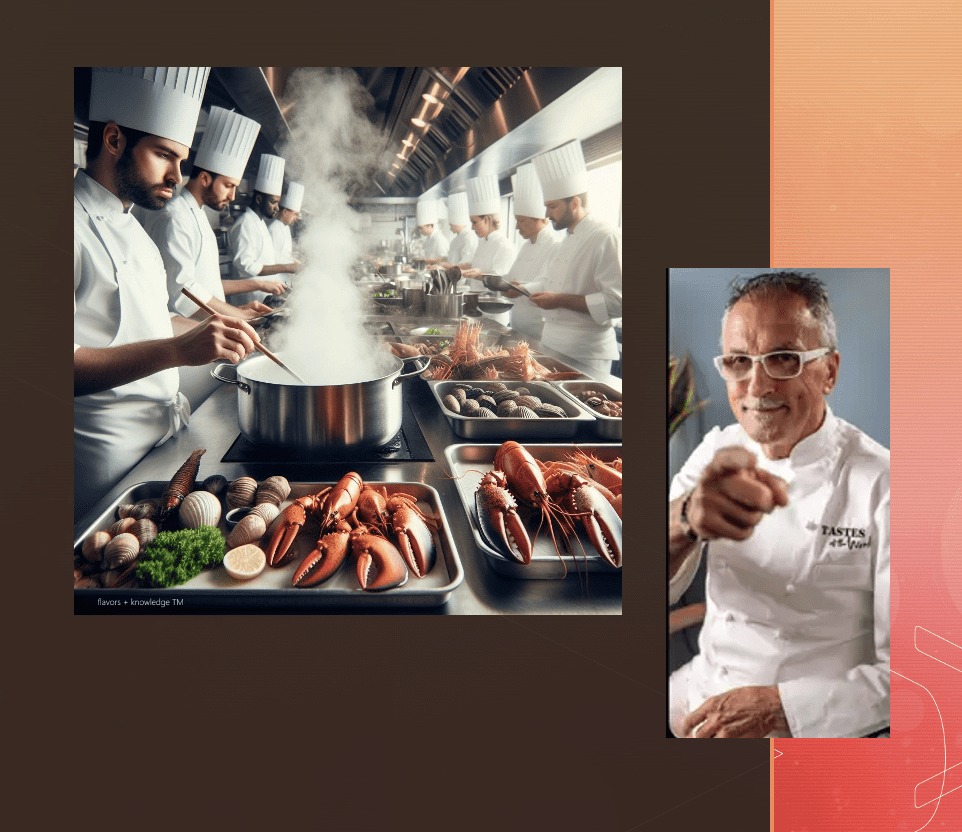Search Posts
Recent Posts
- Vinny Paz to be inducted TODAY into the International Boxing Hall of Fame – CES Boxing June 7, 2025
- In the News… quick recap of the week’s news (6.7.25) June 7, 2025
- Burn with Kearns: Strong without the spend: How scraps became strength tools – Kevin Kearns June 7, 2025
- Rhode Island Weather for June 7, 2025 – Jack Donnelly June 7, 2025
- How to advocate for threatened properties: The Heritage Alliance of Pawtucket June 7, 2025
Categories
Subscribe!
Please enter your name.
Please enter a valid email address.
Thanks for subscribing! Please check your email for further instructions.
Something went wrong. Please check your entries and try again.

Ask Chef Walter: How to Poach Seafood – Chef Walter Potenza
Hey friends and RINT followers:
Marybeth C. from Bakersfield, California, asked for clarifications on poaching seafood.
Here you have it!
Poaching seafood is a gentle cooking method that simmers seafood in a flavorful liquid until cooked.
Here’s how to do it in 6 easy steps and methods I use in my kitchens.
- Choose a flavorful liquid such as fish stock, white wine, or court bouillon.
- Bring the liquid to a simmer in a large pot.
- Add your seafood, such as fish fillets, shrimp, or scallops, to the pot.
- Make sure the seafood is fully submerged in the liquid.
- Simmer the seafood for a few minutes until it’s cooked through. The exact cooking time will depend on the type and thickness of the seafood.
- Use a slotted spoon or spatula to remove the seafood from the pot and serve it immediately.
That’s it! Poaching is a simple and healthy cooking method that’s perfect for seafood. Below, I am including the five mistakes to avoid when poaching seafood.
- Overcooking: One of the most common mistakes when poaching seafood is overcooking it. Overcooking can cause the seafood to become tough and rubbery. It is crucial to monitor the cooking time and remove the seafood from the poaching liquid when it reaches the necessary doneness. Some seafood has different thicknesses and textures, so decide accordingly.
- Using boiling water: Boiling water can be too harsh for delicate seafood like shrimp, scallops, and fish. It is better to use a gentle simmer when poaching seafood to prevent it from becoming overcooked and tough. Also, when you purchase expensive seafood, I suggest you use bottled and filtered water for your poaching.
- Not seasoning the poaching liquid: Seafood can be bland if not seasoned properly. Adding spices, herbs, and aromatics like garlic, onions, and lemon to the poaching liquid can add flavor to the seafood. One ingredient rarely used is fennel, which I strongly suggest.
- Using the wrong poaching liquid: The poaching liquid can significantly affect the seafood flavor. Plain water can make the seafood bland, while a flavorful broth or wine can enhance the taste. Choosing the suitable poaching liquid is vital based on the type of seafood chosen and desired preparation.
- Crowding the pan: Overcrowding the pan can cause the seafood to cook unevenly and can cause it to break apart. Therefore, a pan large enough to accommodate the seafood without overcrowding is essential. If necessary, poach the seafood in batches. Good luck!
___
Flavors + Knowledge Editorial Board SimVal Media Group USA

Posted in Ask Chef Walter

